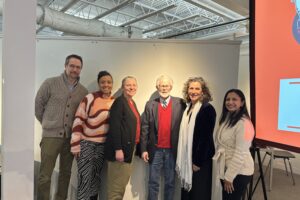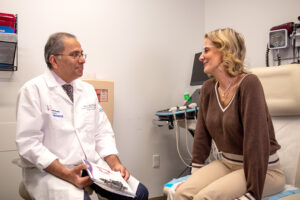A runner sprints across the finish line, a dancer leaps through the air, and a child climbs a tree with boundless energy. These images of human movement, of bodies in motion, speak to our innate desire for mobility, for the freedom to explore our world and express ourselves physically. But what happens when injury, illness, or congenital conditions impede this freedom? For individuals facing limb loss or mobility impairments, the challenges can be profound, impacting their independence, their sense of self, and their ability to participate fully in life. This is where the field of orthotics & prosthetics service steps in, offering not just assistive devices but a pathway to reclaiming mobility, restoring confidence, and unlocking human potential. Through innovative technology, personalized care, and unwavering support, orthotics and prosthetics empower individuals to overcome limitations and embrace a life filled with possibilities.
Understanding Orthotics and Prosthetics
Orthotics and prosthetics are two distinct yet interconnected fields within the realm of rehabilitation medicine. While both aim to improve mobility and enhance quality of life, they do so through different approaches. Orthotics involves the design, fabrication, and fitting of external devices, known as orthoses, to support, align, or correct musculoskeletal deformities or weaknesses. These devices can range from simple shoe inserts and ankle braces to more complex spinal orthoses and custom-made splints.
Prosthetics, on the other hand, focuses on the creation and fitting of artificial limbs to replace missing body parts. These limbs can be designed for various levels of amputation, from partial hand or foot prostheses to full arm or leg replacements. A comprehensive orthotics & prosthetics service typically involves a team of skilled professionals, including orthotics, prosthetists, therapists, and physicians, working together to assess individual needs, design and fabricate customized devices and provide ongoing support and rehabilitation. Whether it’s restoring mobility after an injury, managing a chronic condition, or adapting to limb loss, orthotics and prosthetics play a vital role in helping individuals achieve their full potential.
The Art and Science of Custom Prosthetics
Creating custom prosthetics, whether it’s an above the knee prosthetic leg or a prosthetic hand, is a delicate blend of artistry and scientific precision. It’s a process that begins with a thorough assessment of the individual’s needs, lifestyle, and goals. Prosthetists take precise measurements, considering factors such as limb length, residual limb shape, and the patient’s activity level. This information guides the design and fabrication of a prosthesis that is not only functional but also comfortable and aesthetically pleasing.
Modern prosthetics utilize a range of materials, from lightweight carbon fiber and titanium to durable plastics and silicone. Advanced technologies, such as 3D printing and computer-aided design, allow for greater precision and customization. Prosthetists carefully sculpt and shape the prosthetic socket, the interface between the residual limb and the prosthesis, to ensure a comfortable and secure fit. They select appropriate components, such as prosthetic feet, ankles, and knees, based on the individual’s needs and activity level. The final product is a unique work of art and engineering, designed to restore function, enhance mobility, and empower the individual to live a fulfilling life.
A Collaborative Journey: The Role of Support and Rehabilitation
The journey to reclaiming mobility and restoring confidence with orthotics and prosthetics is rarely a solitary one. It involves a collaborative effort between the individual, their prosthetist or orthotist, therapists, and other healthcare professionals. This multidisciplinary approach ensures that individuals receive comprehensive care, tailored to their specific needs and goals.
Rehabilitation plays a crucial role in this process. Physical therapists work with individuals to strengthen muscles, improve balance and coordination, and develop the skills necessary to use their new devices effectively. Occupational therapists focus on adapting daily activities and tasks to maximize independence and functionality. Psychologists and counselors provide emotional support, helping individuals navigate the challenges and adjustments that come with using orthotics or prosthetics. The prosthetist or orthotist provides ongoing adjustments, maintenance, and support, ensuring the device continues to fit properly and function optimally. This collaborative journey fosters a sense of partnership and empowerment, allowing individuals to navigate their rehabilitation with confidence and achieve their full potential.
Conclusion
The human spirit is remarkably resilient, capable of overcoming adversity and achieving extraordinary feats. Orthotics and prosthetics stand as a testament to this resilience, offering a pathway to reclaim mobility, restore confidence, and unlock human potential. From the intricate design of custom prosthetics to the advanced technology of above-knee prosthetic legs, these devices empower individuals to transcend limitations and embrace a life filled with possibilities.
Beyond the restoration of physical function, orthotics and prosthetics play a crucial role in fostering independence, enhancing self-esteem, and enabling individuals to participate fully in life. The collaborative journey of rehabilitation and support further strengthens this empowerment, creating a network of care that guides individuals towards their goals. As technology continues to advance and the understanding of human biomechanics deepens, the future of orthotics and prosthetics holds even greater promise for enhancing human potential and empowering individuals to live life to the fullest.






